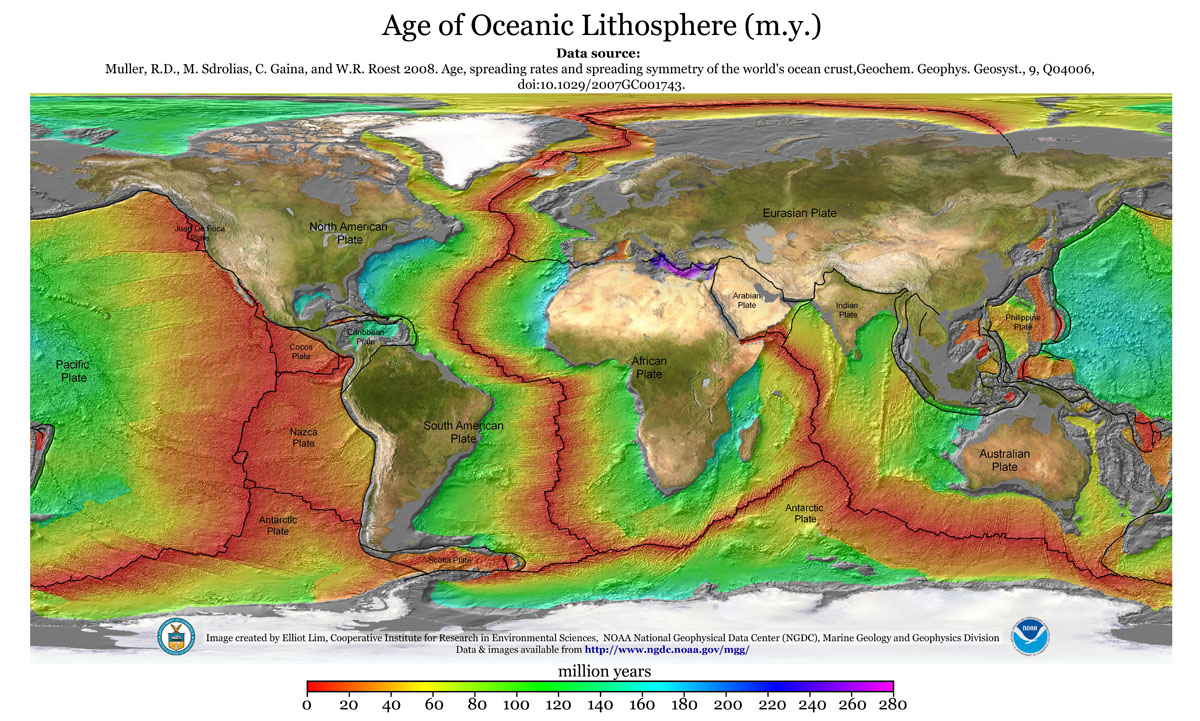2.2 Where? Mid-ocean Ridges
Earth scientists have confirmed through the numerous samples of various ocean drilling programs (see IODP) that the rocks beneath the oceans are relatively young igneous rocks, principally basalt. Colors on the image above show the ages of the igneous rocks on the ocean floor based on samples and geophysical (magnetic) data (Müller et al., 2008). Although few submarine eruptions have been observed directly, the symmetrical distribution of ocean lithosphere ages about the mid-ocean ridges is consistent with frequent submarine eruptions and sea floor spreading at those ridges.
Numerous earthquakes are associated with subaerial volcanic eruptions. You can see this on the wonderful Smithsonian Institution's "Eruptions, Earthquakes, & Emissions" web application ("E3"), a time-lapse animation of volcanic eruptions and earthquakes since 1960. Watch the E3 animation and you will see many earthquakes associated with mid-ocean ridges, which is consistent with submarine volcanic eruptions there. Watch this short video about mid-ocean ridge volcanism using E3 by Dr. Liz Cottrell, Director of the Global Volcanism Program (GVP).
The evidence presented here supports the importance of plate boundaries in the formation of igneous rocks. Combining submarine mid-ocean ridge volcanism with the many volcanoes listed in the GVP Holocene dataset, it is clear that the majority of volcanic rocks are formed either at convergent plate boundaries (subduction zone settings) or divergent plate boundaries (rift zone settings). But why are igneous rock produced at plate boundaries?

Figure 2.02. Age of the oceanic lithosphere. The ocean floor is young (most less than 200 Ma) relative to the age of the earth (4.56 Ga), and consists of igneous rocks (submarine lava flows) covered by comparatively thin sedimentary deposits. The ages of these submarine lava flows are given by the colors in this image created in 2008 by Elliot Lim at NOAA. Click on the image to view a large zoomable version and more information.